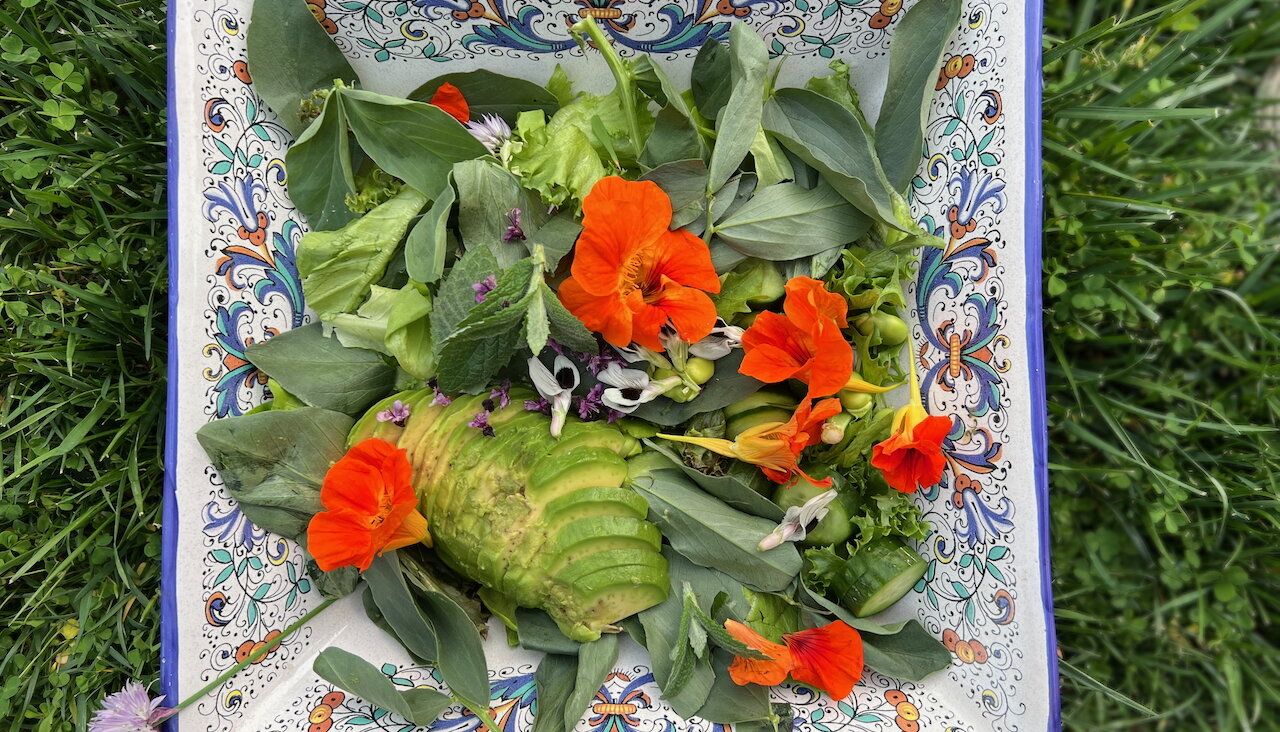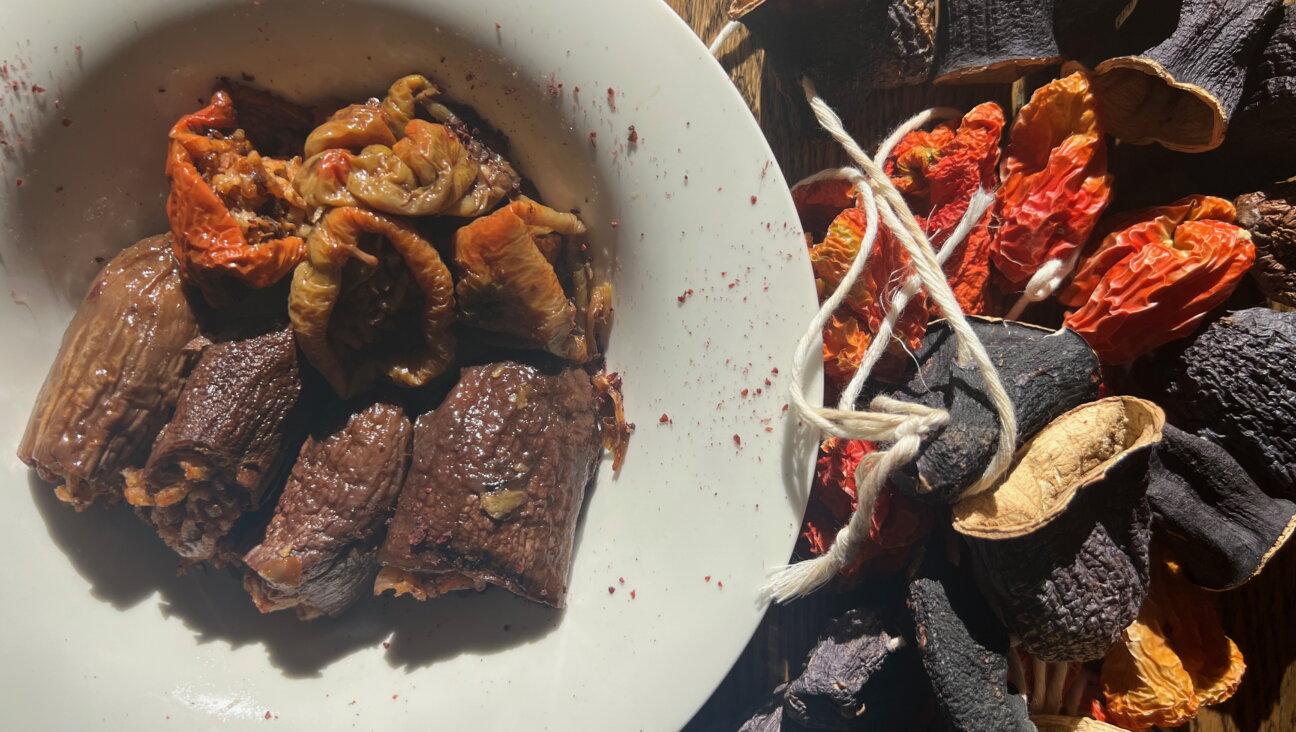Whisky: Biting The Bulleit And Doing The ‘Dew’ For Purim

Image by Eva Adams
I thought I’d pop a couple of whisky-drinking cherries in time to review the two labels for Purim. Until this year, somehow I’d never tried Dewar’s White Label nor any of the offerings from the Bulleit company. And now, for you — Dear Reader — I have.
In some ways the two companies are the inverse of each other — Dewar’s was the biggest selling whisky in America in the early twentieth century while Bulleit was shuttered from 1860 – 1987. But, in other ways, they are parallel, their whisky-Toms are both believers in advertising.
Come To The Forward’s Brooklyn Bourbon Tasting Event With Dan Friedman & Special Guest Samuel G. Freedman, Tuesday March 7, Buy Here Now, Tickets Limited
Thomas Dewar — a charismatic globe-trotter — brought his father’s whisky from Perth to the world at the turn of the twentieth century. He is reputed to have said, “It’s not what we sell, it’s where we sell.”
This original “Whisky-Tom” has been emulated in some way by Thomas E. Bulleit, Jr, who decided to “revive” the brand lost when his great great grandfather Augustus Bulleit disappeared in 1860. Although not enjoying the volume of some of the major names, the Bulleit brand has joined them in windows and on shelves.
Dewar set the tartan trend in motion, playing up the small-town Scottish roots even as he moved to London, became a Baron and, seemingly agitated against Jewish immigration by sponsoring the 1905 Aliens Act. Nowadays, though, Dewar’s is owned by the Bacardi conglomerate.
Bulleit rode the indie Bourbon wave that saw huge increases in the quantity, quality and profitability of domestic production of bourbon and whiskey. Part of the return to Kentucky as the mythical heart of American distilling (even as Indiana produces most of America’s spirit), Bulleit is now owned by the Diageo conglomerate.
But what of the products?
Dewar’s White Label (About $20)
Millions of purchasers can’t be wrong. The mouth start is pleasant. It’s sweet but not too sweet, there’s a promise of flavor and a satisfying warmish aftertaste. It has a proper whisky feel, probably from the Aberfeldy that is at the heart of the blend. But, strangely, there’s little or nothing following up the first taste. The profile of the flavor has a strange drop off between about second two and second ten. That makes it, for me, an ideal whisky for adding ginger ale, for example, but not for sipping.
Bulleit Rye (About $30)
The Bulleit Bourbon is rye enough, I’m told, and rye is what all the cool kids are drinking, I’m told. So I went to the motherlode, the Bulleit Rye whiskey. This had a lovely grassy flavor with hints of anise. It’s sweet, as befits its roots in corn country but, for a “Frontier” whiskey, I was surprised at the prominence of its herbal notes! Definitely worth sipping for Purim and don’t stop til Pesach.
Dan Friedman is executive editor and whisky correspondent at The Forward. Contact him at [email protected].
The Forward is free to read, but it isn’t free to produce

I hope you appreciated this article. Before you go, I’d like to ask you to please support the Forward.
Now more than ever, American Jews need independent news they can trust, with reporting driven by truth, not ideology. We serve you, not any ideological agenda.
At a time when other newsrooms are closing or cutting back, the Forward has removed its paywall and invested additional resources to report on the ground from Israel and around the U.S. on the impact of the war, rising antisemitism and polarized discourse.
This is a great time to support independent Jewish journalism you rely on. Make a gift today!
— Rachel Fishman Feddersen, Publisher and CEO
Support our mission to tell the Jewish story fully and fairly.
Most Popular
- 1

Fast Forward Ye debuts ‘Heil Hitler’ music video that includes a sample of a Hitler speech
- 2

Opinion It looks like Israel totally underestimated Trump
- 3

Culture Cardinals are Catholic, not Jewish — so why do they all wear yarmulkes?
- 4

Fast Forward Student suspended for ‘F— the Jews’ video defends himself on antisemitic podcast
In Case You Missed It
-

Culture How one Jewish woman fought the Nazis — and helped found a new Italian republic
-

Opinion It looks like Israel totally underestimated Trump
-

Fast Forward Betar ‘almost exclusively triggered’ former student’s detention, judge says
-

Fast Forward ‘Honey, he’s had enough of you’: Trump’s Middle East moves increasingly appear to sideline Israel
-
Shop the Forward Store
100% of profits support our journalism
Republish This Story
Please read before republishing
We’re happy to make this story available to republish for free, unless it originated with JTA, Haaretz or another publication (as indicated on the article) and as long as you follow our guidelines.
You must comply with the following:
- Credit the Forward
- Retain our pixel
- Preserve our canonical link in Google search
- Add a noindex tag in Google search
See our full guidelines for more information, and this guide for detail about canonical URLs.
To republish, copy the HTML by clicking on the yellow button to the right; it includes our tracking pixel, all paragraph styles and hyperlinks, the author byline and credit to the Forward. It does not include images; to avoid copyright violations, you must add them manually, following our guidelines. Please email us at [email protected], subject line “republish,” with any questions or to let us know what stories you’re picking up.
















